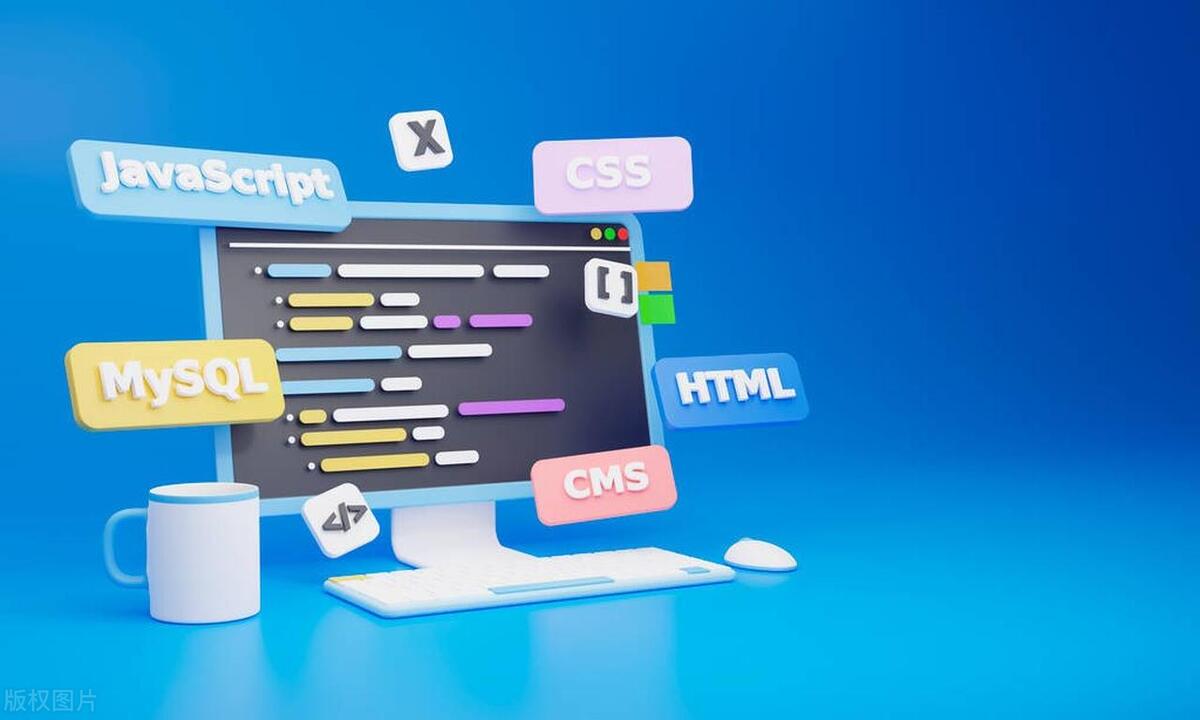To handle errors in Vue applications globally, you need to combine Vue built-in mechanisms and browser standard methods. 1. Use Vue.config.errorHandler to capture errors, record or report in component rendering or life cycle; 2. Listen to global JavaScript errors and unprocessed Promise rejections through window.addEventListener; 3. Set global error flags in Vuex or responsive states to show users friendly prompts; 4. Optionally send error logs to the server to facilitate tracking and fixing problems.

Handling errors globally in a Vue application is one of those things that can make your app feel more poisoned and robust, especially when unexpected issues pop up. Instead of letting errors crash your UI or confuse users, setting up global error handling gives you control over how they're caught and displayed.

Here's how to approach it in a practical way.

Use Vue.config.errorHandler for Component Errors
Vue provides a built-in way to catch errors that happen during component rendering or lifecycle hooks: errorHandler . This function lets you log errors or send them to your backend without the app crashing.
You can set it up in your main.js file like this:

Vue.config.errorHandler = function (err, vm, info) {
// err: the error object
// vm: the Vue instance where the error occurred
// info: additional Vue-specific error info (eg, "render function")
console.error('Vue error:', err, info);
// Optionally send to a logging service
}This doesn't catch JavaScript syntax errors or errors outside of Vue (like in event handlers or setTimeout), but it's great for tracking Vue-related issues.
Handle Uncaught JavaScript Errors and Promises
For general JavaScript errors — like those not tied directly to Vue — you'll want to use standard browser mechanisms:
Global error listener for uncaught exceptions:
window.addEventListener('error', (event) => { console.error('Global error:', event.message); event.preventDefault(); // Prevent default error handling });Unhandled promise rejections :
window.addEventListener('unhandledrejection', (event) => { console.warn('Unhandled promise rejection:', event.reason); event.preventDefault(); // Stops the browser from logging the warning });
These two listeners help catch errors that fall through the cracks — like API calls failing unexpectedly or third-party libraries throwing something weird.
Show Friendly Error Messages to Users
Logging errors is useful for developers, but users just need to know something went wrong — without seeing cryptic messages or a blank screen.
A simple way to handle this is by using a global error flag in your Vuex store or a reactive property if you're not using Vuex. When an error is caught, update the state and show a message on the screen.
For example:
- Set a
globalErrorin your store. - In your App.vue or layout component, watch for changes to
globalError. - Display a banner or modal with a friendly message like “Something went wrong. Please try again later.”
You can also reset the app or allow users to retry actions from there.
Some tips:
- Avoid technical jargon in user-facing messages.
- Include a button to reload or close the error UI.
- Don't forget to clear the error after showing it once.
Log Errors to a Service (Optional but Helpful)
If you're building a production app, consider sending errors to a logging service like Sentry, Bugsnag, or even your own backend endpoint.
It's usually as simple as adding a few lines:
Vue.config.errorHandler = function (err, vm, info) {
sendErrorToServer(err);
}
function sendErrorToServer(error) {
fetch('/log-error', {
method: 'POST',
body: JSON.stringify({
message: error.message,
stack: error.stack,
info: info,
time: new Date()
}),
headers: { 'Content-Type': 'application/json' }
});
}This helps you spot patterns and fix issues before users even report them.
So yeah, setting up global error handling in Vue isn't too hard, but it does take a few pieces working together. Once it's in place, your app becomes more resilient and user-friendly — which makes everyone happier.
The above is the detailed content of Global Error Handling in a Vue Application. For more information, please follow other related articles on the PHP Chinese website!

Hot AI Tools

Undress AI Tool
Undress images for free

Undresser.AI Undress
AI-powered app for creating realistic nude photos

AI Clothes Remover
Online AI tool for removing clothes from photos.

Clothoff.io
AI clothes remover

Video Face Swap
Swap faces in any video effortlessly with our completely free AI face swap tool!

Hot Article

Hot Tools

Notepad++7.3.1
Easy-to-use and free code editor

SublimeText3 Chinese version
Chinese version, very easy to use

Zend Studio 13.0.1
Powerful PHP integrated development environment

Dreamweaver CS6
Visual web development tools

SublimeText3 Mac version
God-level code editing software (SublimeText3)

Hot Topics
 How can CSS be used to implement dark mode theming on a website?
Jun 19, 2025 am 12:51 AM
How can CSS be used to implement dark mode theming on a website?
Jun 19, 2025 am 12:51 AM
ToimplementdarkmodeinCSSeffectively,useCSSvariablesforthemecolors,detectsystempreferenceswithprefers-color-scheme,addamanualtogglebutton,andhandleimagesandbackgroundsthoughtfully.1.DefineCSSvariablesforlightanddarkthemestomanagecolorsefficiently.2.Us
 Can you explain the difference between em, rem, px, and viewport units (vh, vw)?
Jun 19, 2025 am 12:51 AM
Can you explain the difference between em, rem, px, and viewport units (vh, vw)?
Jun 19, 2025 am 12:51 AM
The topic differencebetweenem, Rem, PX, andViewportunits (VH, VW) LiesintheirreFerencepoint: PXISFixedandbasedonpixelvalues, emissrelative EtothefontsizeFheelementoritsparent, Remisrelelatotherootfontsize, AndVH/VwarebaseDontheviewporttimensions.1.PXoffersprecis
 What are CSS Houdini APIs, and how do they allow developers to extend CSS itself?
Jun 19, 2025 am 12:52 AM
What are CSS Houdini APIs, and how do they allow developers to extend CSS itself?
Jun 19, 2025 am 12:52 AM
CSSHoudini is a set of APIs that allow developers to directly manipulate and extend the browser's style processing flow through JavaScript. 1. PaintWorklet controls element drawing; 2. LayoutWorklet custom layout logic; 3. AnimationWorklet implements high-performance animation; 4. Parser&TypedOM efficiently operates CSS properties; 5. Properties&ValuesAPI registers custom properties; 6. FontMetricsAPI obtains font information. It allows developers to expand CSS in unprecedented ways, achieve effects such as wave backgrounds, and have good performance and flexibility
 What is the significance of Vue's reactivity transform (experimental, then removed) and its goals?
Jun 20, 2025 am 01:01 AM
What is the significance of Vue's reactivity transform (experimental, then removed) and its goals?
Jun 20, 2025 am 01:01 AM
ReactivitytransforminVue3aimedtosimplifyhandlingreactivedatabyautomaticallytrackingandmanagingreactivitywithoutrequiringmanualref()or.valueusage.Itsoughttoreduceboilerplateandimprovecodereadabilitybytreatingvariableslikeletandconstasautomaticallyreac
 How can CSS gradients (linear-gradient, radial-gradient) be used to create rich backgrounds?
Jun 21, 2025 am 01:05 AM
How can CSS gradients (linear-gradient, radial-gradient) be used to create rich backgrounds?
Jun 21, 2025 am 01:05 AM
CSSgradientsenhancebackgroundswithdepthandvisualappeal.1.Startwithlineargradientsforsmoothcolortransitionsalongaline,specifyingdirectionandcolorstops.2.Useradialgradientsforcirculareffects,adjustingshapeandcenterposition.3.Layermultiplegradientstocre
 What are the key differences between inline, block, inline-block, and flex display values?
Jun 20, 2025 am 01:01 AM
What are the key differences between inline, block, inline-block, and flex display values?
Jun 20, 2025 am 01:01 AM
Choosing the correct display value in CSS is crucial because it controls the behavior of elements in the layout. 1.inline: Make elements flow like text, without occupying a single line, and cannot directly set width and height, suitable for elements in text, such as; 2.block: Make elements exclusively occupy one line and occupy all width, can set width and height and inner and outer margins, suitable for structured elements, such as; 3.inline-block: has both block characteristics and inline layout, can set size but still display in the same line, suitable for horizontal layouts that require consistent spacing; 4.flex: Modern layout mode, suitable for containers, easy to achieve alignment and distribution through justify-content, align-items and other attributes, yes
 How can internationalization (i18n) and localization (l10n) be implemented in a Vue application?
Jun 20, 2025 am 01:00 AM
How can internationalization (i18n) and localization (l10n) be implemented in a Vue application?
Jun 20, 2025 am 01:00 AM
InternationalizationandlocalizationinVueappsareprimarilyhandledusingtheVueI18nplugin.1.Installvue-i18nvianpmoryarn.2.CreatelocaleJSONfiles(e.g.,en.json,es.json)fortranslationmessages.3.Setupthei18ninstanceinmain.jswithlocaleconfigurationandmessagefil
 How does provide and inject allow for deep component communication without prop drilling in Vue?
Jun 20, 2025 am 01:03 AM
How does provide and inject allow for deep component communication without prop drilling in Vue?
Jun 20, 2025 am 01:03 AM
In Vue, provide and inject are features for directly passing data across hierarchical components. The parent component provides data or methods through provide, and descendant components directly inject and use these data or methods through inject, without passing props layer by layer; 2. It is suitable for avoiding "propdrilling", such as passing global or shared data such as topics, user status, API services, etc.; 3. Note when using: non-responsive original values ??must be wrapped into responsive objects to achieve responsive updates, and should not be abused to avoid affecting maintainability.






